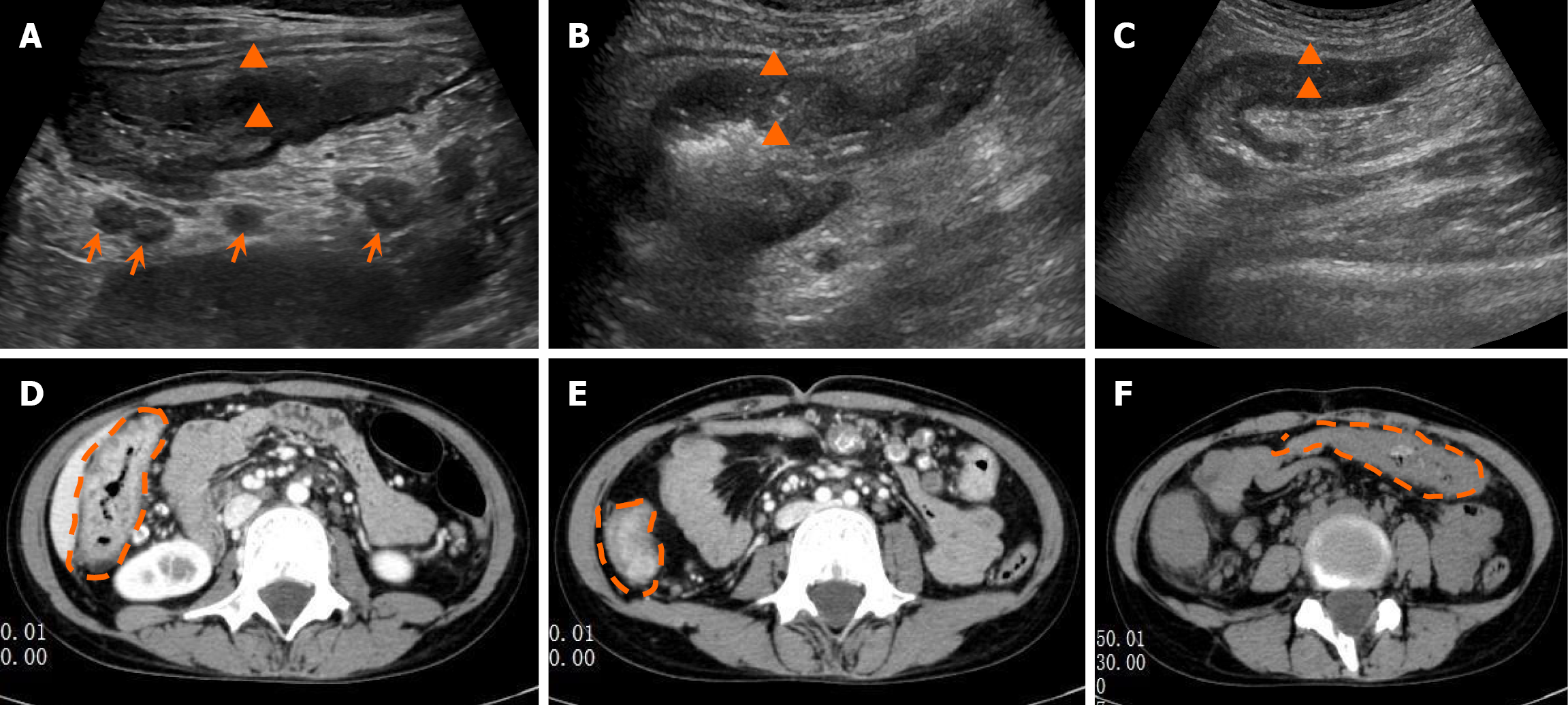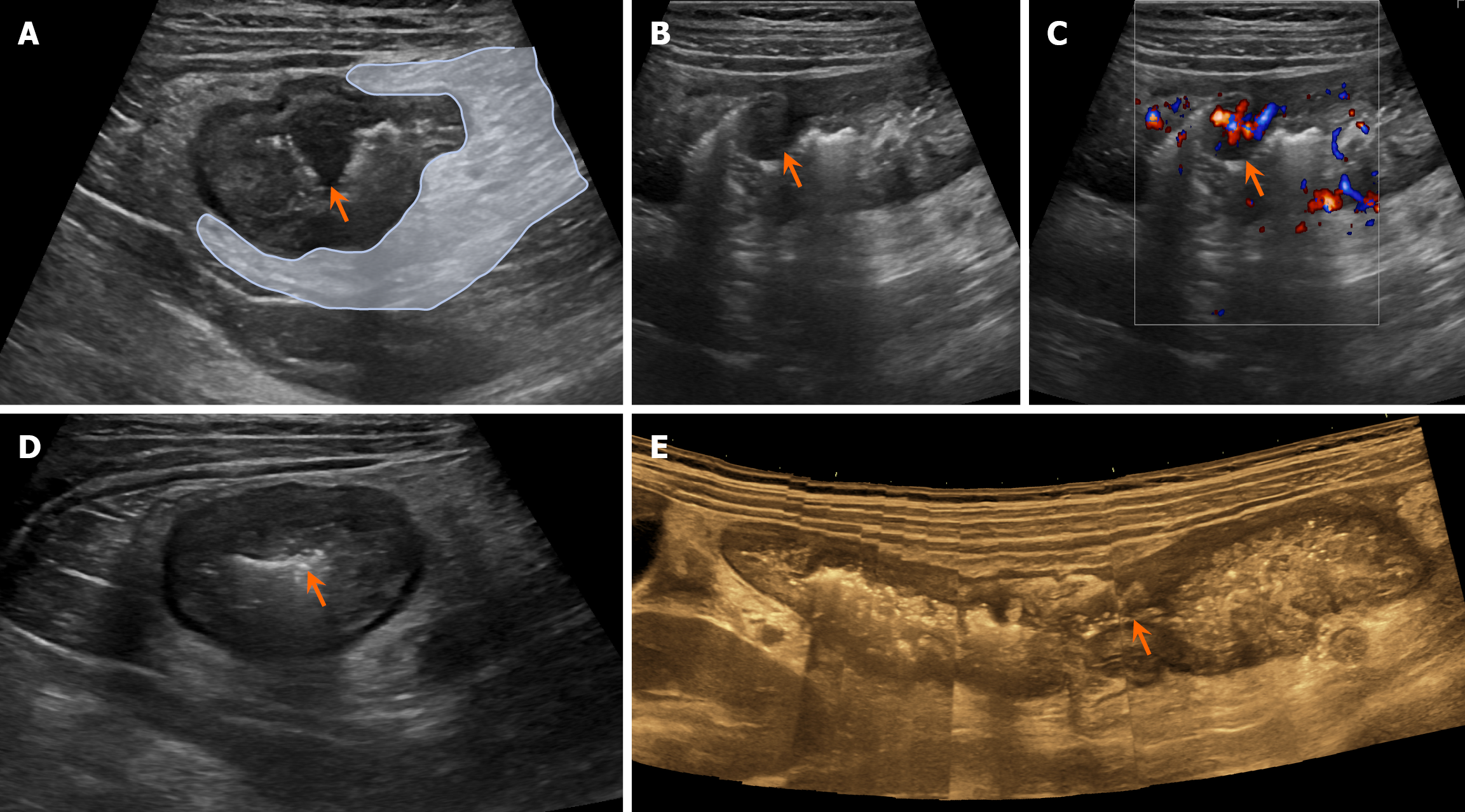Copyright
©The Author(s) 2025.
World J Gastrointest Surg. Sep 27, 2025; 17(9): 108348
Published online Sep 27, 2025. doi: 10.4240/wjgs.v17.i9.108348
Published online Sep 27, 2025. doi: 10.4240/wjgs.v17.i9.108348
Figure 1 Imaging examinations.
A-C: Gastrointestinal ultrasound imaging showed uneven edema and thickening of the ascending colon, transverse colon, and splenic flexure colon walls (triangle), along with punctate calcifications within the mesenteric lymph nodes due to long-term inflammatory infiltration (arrows); D-F: Computed tomography imaging showed edema and thickening of the ascending colon, ileocecal region, and splenic flexure colon walls (orange dashed lines).
Figure 2 Gastrointestinal ultrasound imaging examinations.
A-C: Inflammatory polyps of the colon with abundant blood flow signals (arrows), and edematous and thickened mesentery (light blue areas); D and E: Luminal stenosis caused by thickening of the ascending colon wall (arrows); Cross-sectional view of the bowel (D); Wide-scene imaging (E).
Figure 3 Endoscopic images and intestinal mucosa biopsy histopathology images.
A: Edematous and irregularly hyperplastic intestinal mucosa with a cobblestone appearance under colonoscopic view (arrow); B: Discontinuous creeping ulcers of the intestinal mucosa under colonoscopic view, with normal-appearing mucosa between the ulcers (arrow); C: Histopathological examination revealed lymphocytic aggregation (× 10 magnification, hematoxylin-eosin staining).
- Citation: Wang WQ, Yang JP, Dong JW, Chen YB. Misdiagnosis of Crohn’s disease as appendicitis: A case report. World J Gastrointest Surg 2025; 17(9): 108348
- URL: https://www.wjgnet.com/1948-9366/full/v17/i9/108348.htm
- DOI: https://dx.doi.org/10.4240/wjgs.v17.i9.108348















